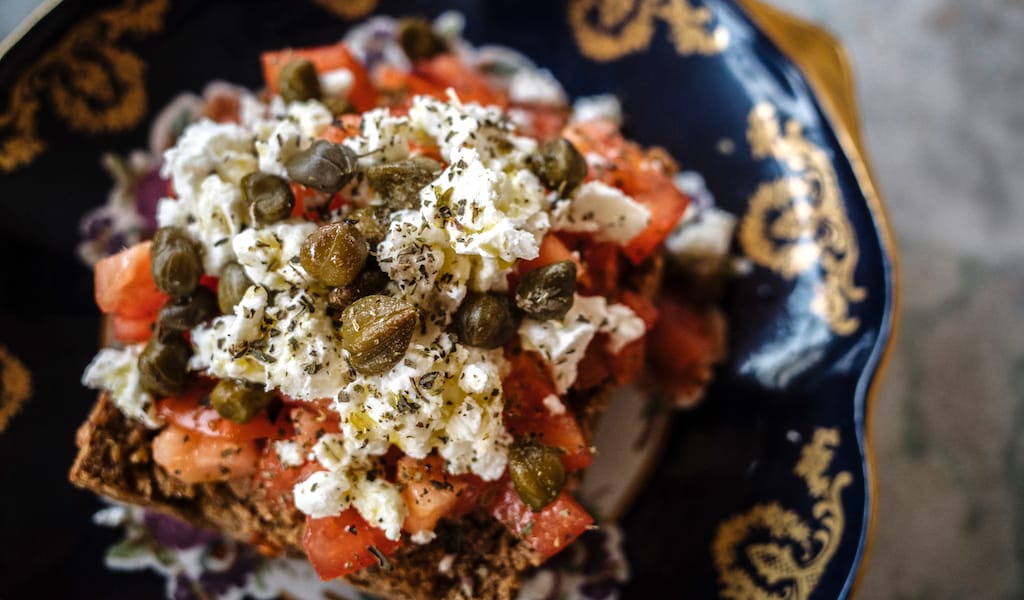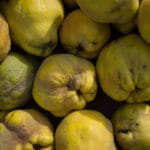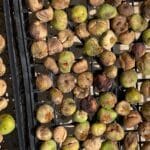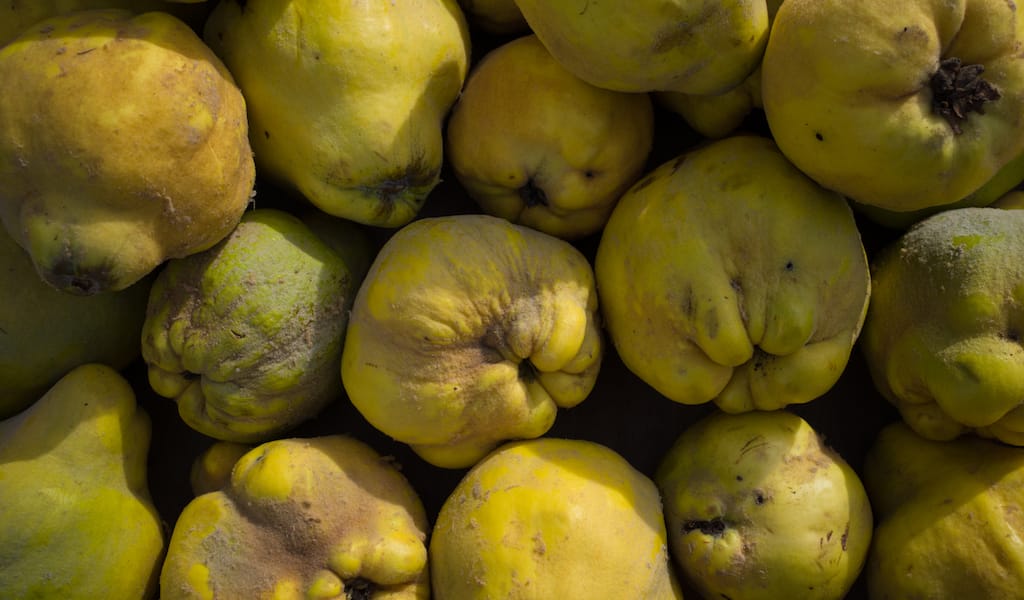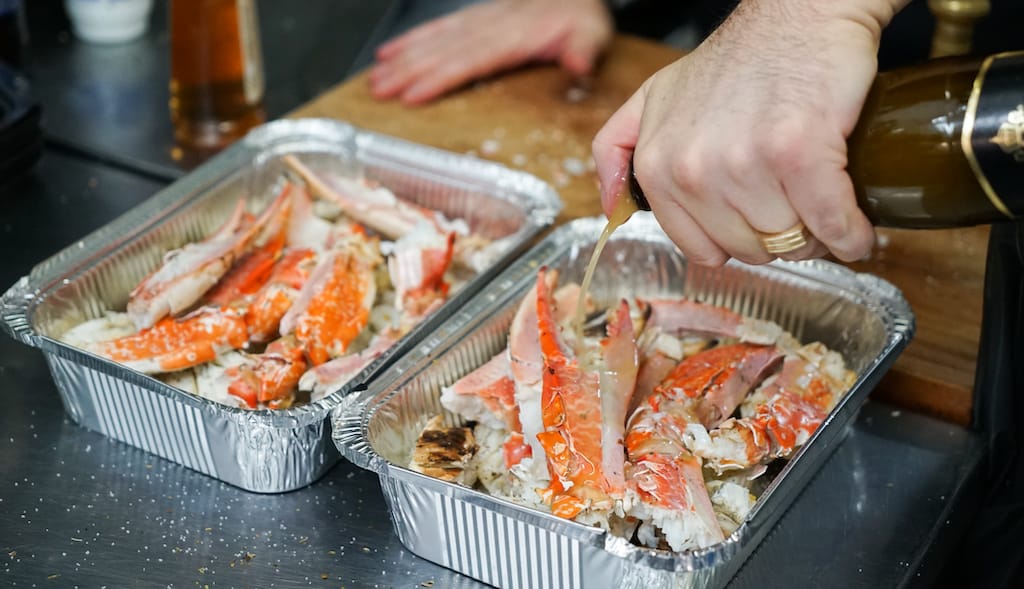They grow off of walls and rocks, on rocky hills, near the sea – and even out of chinks in the sidewalk in the center of Athens. Tangy, floral and tart, capers are a wild crop like no other. The Acropolis Hill and most other ancient monuments in central Athens are covered with crawling caper plants throughout summer. On the islands, when driving those curvy, snake-like roads, look out for capers growing under the cliffs and hanging off the side of the road. (These plants often grow huge in size!) Growing untamed all over most of Greece, capers have been making their way onto local tables for centuries.
The oldest recorded evidence of capers being used in food is in the Sumerian Epic of Gilgamesh, written c. 2150-1400 BCE. This assumes its origin is around the area of central and west Asia. However, we are not so certain about the exact origin of the caper plant, or whether it was growing simultaneously across various lands. The fact is, it was used by several ancient civilizations, including the Greeks.
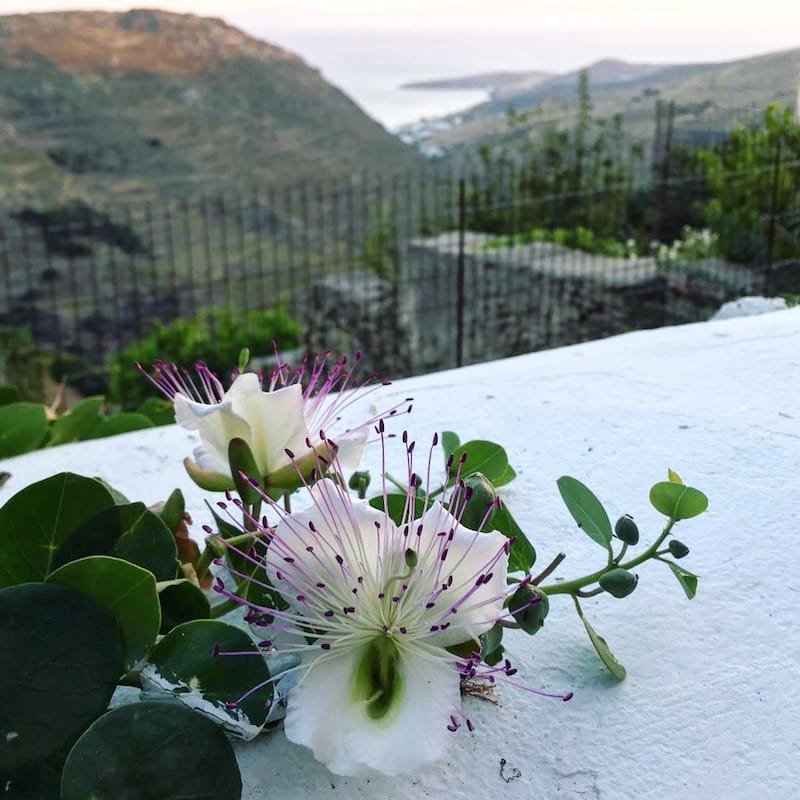
The caper, officially Capparis spinosa, is a perennial shrub that grows wild in many parts of the world, including the Mediterranean and southern Europe, East Africa, Southwest and Central Asia, the Pacific Islands and Australia. This bush, at least in Greece, can grow quite large – as wild plants tend to. In Greece, different parts of the caper plant are harvested and preserved, depending on the season: the leaves, the buds and the fruit.
The caper shrub bears rounded leaves, which when young are small and tender, but become fleshier and larger in size as they grow. The buds – probably the most familiar edible part of the plant – must be picked from the plant before they bloom. Once they flower, the blossoms are a stunning pinkish-white with long purple stamens. Each bloom may last just for one day, but the plants will usually keep flowering from May throughout summer. The fruit, or “caper berry” as it’s called in English, is larger than the buds, more oblong and seedier. These grow a bit later into summer, and in Greece we call them caper cucumbers.
The best capers are those that grow near the sea: naturally clean and salty from the sea wind. The caper plant loves a dry and warm climate, and rocky earth. This is why wild capers thrive on the dry Cycladic Islands, such as Sifnos, Santorini, Tinos and Folegandros. This is also why they are such a big part of the local cuisines of those islands, included in many recipes beyond the usual salads or garnishes. On these islands, we can find caper dips, caper fritters or caper stews. The tips of the plant, which include young buds, leaves and some of the stem, make for a stunning garnish, and they taste delicious.

All parts of the caper plant that are preserved are naturally bitter, requiring an initial soak in cold water – as is done with olives. Some people will even blanch the caper before pickling. Beyond that, there are three traditional ways to prepare capers. One is to simply dry them in the sun. Capers preserved this way are plain and sold in plastic bags, and these are the easiest to find on the islands. When a traditional recipe calls for capers, this is the kind usually used (although they must first be rehydrated).
The best capers are those that grow near the sea: naturally clean and salty from the sea wind. The caper plant loves a dry and warm climate, and rocky earth.
The second style of preserving capers is to salt pack them. These are sold either in jars or bags, and are easily found at any grocery store. The third method is preserving them in brine, vinegar or olive oil – which is how most people outside of Greece experience capers. Similarly, other parts of the plant can be preserved this way too.
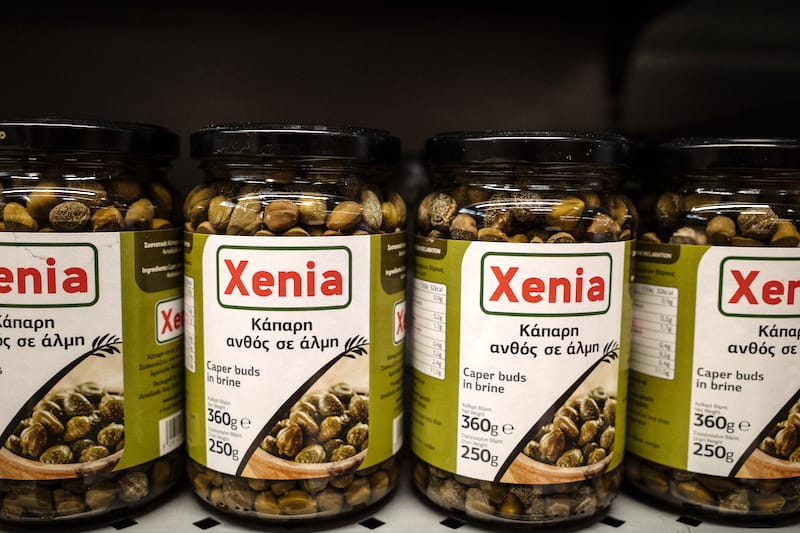
There is also a fourth way of preserving capers – something quite unusual: turning it into a spoon sweet. These can be found at special delis or on the islands. On Tinos Island in late July and early August, a caper festival takes place in the village of Potamia. There, they serve all kinds of dishes involving capers, including unusual sweet treats like the caper spoon sweet.
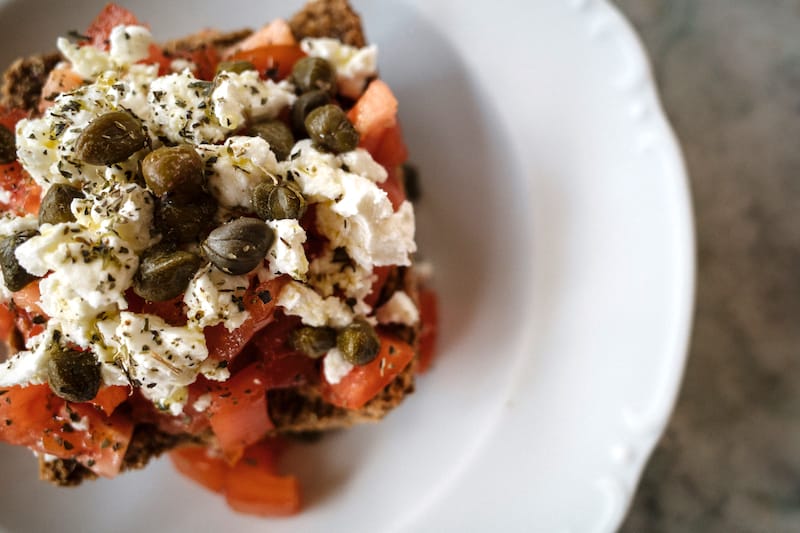
Apart from the culinary use of capers – which is vast and goes back for centuries – the ancient Greeks also used all parts of the plant medicinally, including the roots. Among other things, they used it to treat rheumatism and flatulence. There are claims that capers purify the bladder and liver, are rich in antioxidants and can ward off certain parasites.
Pedanius Dioscorides, an ancient Greek physician, pharmacologist and botanist who wrote an encyclopedia on herbal medicine published in 50 AD, was the first to analyze in detail the health benefits of capers. This analysis has actually even been referenced in many recent studies. Folk Greek medicine has inherited a great deal from ancient wisdom, and also uses the caper plant to treat wasp and snake bites.
In our case, we’ll stick with the edible uses of the caper plant. Fortunately, there are more than enough ways to enjoy this Mediterranean mainstay without ever getting bored of it.
Published on April 19, 2022
Related stories
November 26, 2021
AthensAt first glance, quince can often pass as a larger version of its cousin the pear. But it becomes a bright golden yellow as it matures – hence, it’s longstanding nickname, “the golden apple.” When the quince made its way west from south Asia and the Caucasus into Ancient Greece, the fruit quickly took to…
September 12, 2022
AthensWhoever came up with the expression “I don’t give a fig” had obviously never tasted a Greek fig fresh off the tree. How figs, almost certainly dried, came to be considered common and worthless in late medieval England is a mystery, but for the Greeks, they have always been something to treasure and preserve, to…
August 25, 2022
Athens | By Katherine Whittaker
AthensNikea, known before 1940 as Kokkinia (sometimes, you’ll still hear this old name used), is an area that feels almost like a different city, perhaps even a bigger village on an island. When you come out of the metro, the road is dotted with houses instead of higher-rise apartment buildings, and it is mostly quiet,…







































